Sometimes, we use objects to enjoy everyday without do not know / want to know about the ins and outs of the object as its inventor, mechanical workings and the technology used. However, thanks to the hard work of scientists from NASA or National Aeronautics and Space Administration to examine and make every effort to develop space equipment, so the technology is applied to the objects that you might use every day. Here are my top 10 discoveries inform technology from NASA that most of us use in everyday life.
1. discovery first: Air Filter.
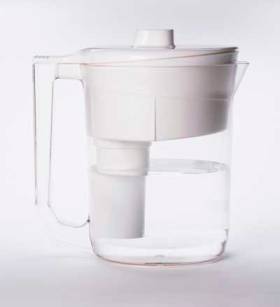
Water is a substance that is essential for human survival. Because man can not live without water, the ability to extract the dirty water into clean water is a remarkable achievement in science.
The astronauts need a way to get clean water in space, because the bacteria and the disease may be more virulent in space. Water filtration technology has been known since the early 1950s, but NASA wants to know how to purify water in extreme situations and keep the water clean for a period of time.
If you see a water filter, you can usually find a small lump-bangkahan charcoal in the filter.Sometimes, when you first use a water filter, you will find small black spots that chunks.Charcoal is activated and contains silver ions that neutralize the pathogenic bacteria in water. Along with killing bacteria in water, filter also suppresses the growth of bacteria.Large companies have implemented this technology and has brought us water filtration system. Millions of people use water filters at home they use them every day.
2. discovery of a second: Equipment-Wireless Equipment.
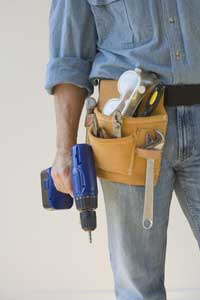
When you clean up dust and dirt on the floor of the house using a cordless vacuum cleaner, you're using the same technology used by astronauts on the moon. Although Black & Decker has found the first time powered tools batteries in 1961, similar to findings from NASA to refine the technology from Black & Decker as a medical instrument or a vacuum cleaner forms of wireless phones and others.
In the mid 1960s, in preparation for the Apollo missions to the moon, NASA needed a tool to take samples of rocks and soil on the moon. Drill a small and lightweight, compact and powerful enough to dig deeper into the lunar surface. Due to the power jack on the moon looking extremely unlikely, NASA and the Black & Decker discover and develop powerful tools batteries, magnetic drill. Used in the context of the outer space environment, Black & Decker design a computer program for equipment that reduces power consumption and maximize the use of batteries.
After NASA project, Black & Decker tools working principle was applied to create other equipment powered batteries that can be used by people everyday.
3. third discovery: Special coating the road.
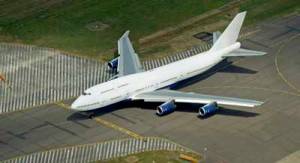
Lining the highway allows a higher friction against the tire to reduce the number of accidents due to slipping. Well this layer was originally used by NASA on the airfield where the plane landed Ulak shuttle.
Now, a lot of toll roads around the world are using it to increase friction on the tires so the grip is stronger. The core of the problem is to make non-slip footing even though there is water on the surface. For example, on a modern swimming pool are also on the edge of this layer.
4. fourth discovery: The Smoke Detector Adjustable.
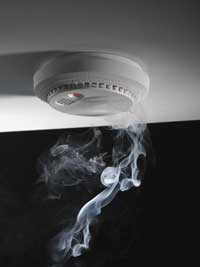
Where there's smoke, there's fire. NASA engineers knew that a simple pact when they were designing Skylab in the 1970s. Skylab was the first space station owned by Americans, and the astronauts had to know if the fire and smoke should not be there in the room station. Working with companies Honeyball, NASA discovered the first smoke detector with levels varying the sensitivity to suppress fault alarm.
For the consumer market, the product is called Ionization smoke detector. That means that the tool uses a radioactive element called americium-241 to detect smoke and harmful gases. When the particles are clean (oxygen and nitogen) moves through the detector, americium-241 ionizes the particles, the particles generate electric. When smoke particles enter the detector, the smoke will interfere with the interaction oxygen, and then trigger the alarm to go off.
5. fifth discovery: Telecommunications Long Distance.
Phone remotely possible is not something foreign to most of us. Cell phone and service facilities through VoIP technology has become cheap now. Although NASA was not the inventor of the telephone, but the long-distance telecommunications meant here is not just a phone. Even technology was developed several decades.
Before man sent into space, NASA built satellites that can be communicated to humans on Earth and show what kind of space it is. Using the same satellite technology, about 200 communications satellites in space orbited every day. These satellites send and receive messages. These satellites membuaat we can call our friends in Italy while we were in Indonesia. NASA supervise the location and condition of each satellite and make sure we can enjoy a long-distance means of communication every day.
6. discovery of six: Technology Sol Shoes.

Currently athletik shoe boots adopt the technology from being used Neil Armstrong. How can that be?
All clothing designed for space missions including Apollo shoe design. Shoes that are worn by the astronauts using a small spring embedded in the bottom of the shoe. This spring to help the astronauts to move more comfortably in the month. Various companies athletik shoes adopt this technology to create a shoe that can mitigate the adverse effects on the feet and joints in the foot.
In the mid 1980s, shoe companies Kangaroos USA applying this technology working principle and the material used in the shoe astronaut ranks athletik sepati new models mass produced. With the help of NASA, patented technology Kangaroos Dynacoil three-dimensional foam polyurethane which distributes the force on the foot that occurs when walking or running. By mixing the fibers into the foam material, kangaroos shoes absorb energy from the foot to hit ground / road, and reflect energy back to the foot.
Now, the other shoe companies, AVIA, also uses technology shoes athletik astronauts on shoes.
7. discovery seventh: Ear Thermometer.
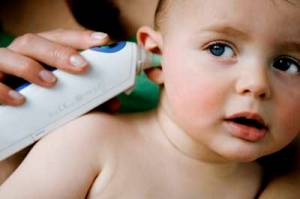
Checking body temperature when sick can be a complex task. Standard thermometer (mercury) is very hard to read, and the kind that rectal really uncomfortable to use. In 1991, the infrared thermometer is placed in the ear to change any trouble before, simplify and accelerate the process.
DIATEK, who developed this type of thermometer, the nurse noticed that the length of time it is necessary to check the temperature of treatment. Approximately one billion times pengecekkan temperatures occur in hospitals in the United yiap year, companies think to save valuable time and terbuag in pengecekkan using mercury. As a substitute, DIATEK take advantage of NASA technology advances in technology the temperature of stars with infrared technology.
Together with NASA's Jet Propulsion Laboratory, the company DIATEK find a decent infrared sensor to be implanted in the thermometer. Ear thermometer with infrared sensors take the temperature of the ear eardrum issued by the ear hole. Since the eardrum is on the inside of the body, the ear drum temperature equal to the temperature in the body aka more precision in the results were detected. Infrared Thermometer in hospital can measure temperatures less than 2 seconds.



